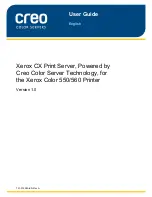
drive (diskette drive) is continuously polled until a valid firmware image can be found
and loaded. The original system VPD information is merged in before the composite
image is programmed. The recovery block flash sectors are not modified during a
recovery update.
For any update, the firmware flash update routine checks if the system flash part can
be updated. The flash ID and sector protection bits are retrieved from the part. If the
flash ID could not be read or the flash ID indicates an unsupported part, then the
update routine is terminated. If the ID indicates a supported part, then the sector
programming data structures are initialized. The sector protection bits are examined,
to ensure that the sectors to be updated are not write-protected. If a sector to be
updated is write-protected, then the update routine is terminated. If the flash part
passes all of these validity tests, then the routine moves onto file operations.
The firmware flash update routine checks the selected flash media for the flash file.
If the file is located and loaded successfully from the media, it is then examined to
ensure it is a valid firmware image. A firmware image is verified by checking if it has
a valid CRC, valid file length, valid flash table/system ID structure. If the firmware
image could not be loaded or is invalid, then the update routine is terminated.
For normal or recovery mode, once a valid firmware image is loaded successfully,
the VPD information is merged from the flash ROM to the image. The VPD
information is duplicated in the recovery block and composite image, which ensures
that there is a protected copy of the VPD in case the composite image is corrupted.
Now that the firmware image is ready for programming, the firmware flash update
routine begins the section of code that erases and programs the flash part. During
this section of code, a system power-down results in a corrupted flash ROM. Notice
that for normal and recovery mode, only the composite image sectors are erased
and reprogrammed, so those sectors would be the only ones that could be corrupted.
Since the recovery block is protected in these modes, the system can still be
restored through a recovery flash update. A system power down at the wrong time
could result in a completely corrupted flash ROM and a dead system. To minimize
the risk when in text mode, the routine displays a message warning the user "Flash
update in progress. Do not power down the system...".
Before the flash part can be programmed with the new image, the firmware flash
update routine must erase the appropriate sectors. For all modes, the composite
image sectors are erased and reprogrammed first. If an erase operation fails, it is
retried according to the flash part spec. If the flash part won't erase even after
retries, the update routine is terminated. If the erase operation was successful, the
firmware flash update routine programs the composite image into the corresponding
flash sectors. If a byte in the flash part cannot be programmed with a new value,
even after the specified retries, the update routine is terminated. If the composite
6-8
Service Guide
Summary of Contents for RS/6000 7024 E Series
Page 1: ...RS 6000 7024 E Series IBM Service Guide SA38 0502 03...
Page 5: ...Power Cables 8 5 Appendix A Firmware Checkpoint Three Digit Codes A 1 Index X 1 Preface v...
Page 6: ...vi Service Guide...
Page 18: ...xviii Service Guide...
Page 20: ...xx Service Guide...
Page 22: ...Rear View 1 2 Service Guide...
Page 23: ...Side View with Covers Removed Chapter 1 Reference Information 1 3...
Page 24: ...Recommended SCSI IDs 1 4 Service Guide...
Page 82: ...3 18 Service Guide...
Page 122: ...Replacement To replace the cover perform the removal steps in reverse order 7 6 Service Guide...
Page 148: ...7 32 Service Guide...
Page 149: ...Chapter 8 Parts Information Chapter 8 Parts Information 8 1...
Page 150: ...8 2 Service Guide...
















































